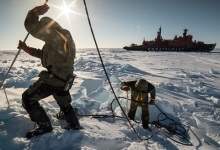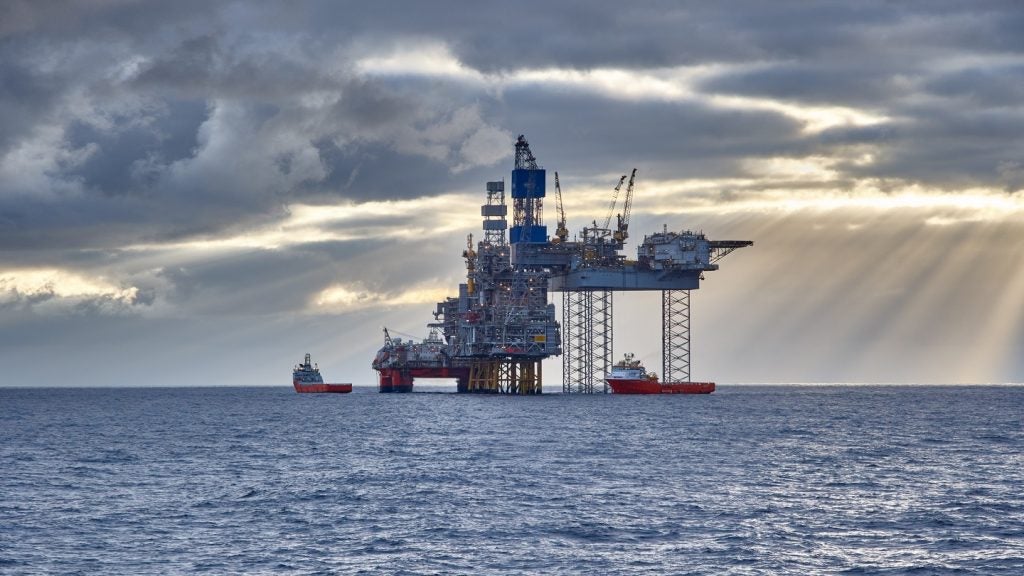

"ExxonMobil is our old, reliable partner, and we greatly value our relationship," said Russian President Vladimir Putin during a conference call with Igor Sechin, CEO of Russian oil company Rosneft, and Glenn Waller, who heads up operations in Russia for America’s and the world’s largest publicly traded oil and gas company, ExxonMobil. Beyond the back rubbing between the parties present on the call, the point was to announce the start of a joint drilling programme between the two companies at Russia’s northernmost well in the Arctic Ocean.
In another excerpt of the call, Putin highlighted the importance of collaboration. "Today, commercial success is driven by efficient international cooperation," he said. The comment comes during a period where the US government has been implementing ever stricter sanctions against its former Cold War combatant over its actions in the Crimea and the Ukraine. On 16 July, the US government placed Rosneft on the list of companies that came under the sanctions.
In the middle of the 20th century, the US and its companies were in direct competition with Russia in the race to achieve spaceflight. Now, the two countries are once again on opposing sides, yet their companies are tied more closely than ever in order to achieve another great technological challenge: to tap the hydrocarbon resources locked under the Arctic Ocean.
Breaking the ice
The project to tap fresh oil reserves in the Arctic began in 2010 when Rosneft was awarded four licenses by its government to launch projects in the Kara and Barents Seas. Together, the three license blocks in the Kara and the one in the South-Russky block in the Pechora Sea are estimated to hold 21.5 billion tons of oil along with further associated hydrocarbons.
See Also:
Ice floes forced Shell to stop drilling operations in the Arctic and the threat is set to escalate.
How well do you really know your competitors?
Access the most comprehensive Company Profiles on the market, powered by GlobalData. Save hours of research. Gain competitive edge.

Thank you!
Your download email will arrive shortly
Not ready to buy yet? Download a free sample
We are confident about the unique quality of our Company Profiles. However, we want you to make the most beneficial decision for your business, so we offer a free sample that you can download by submitting the below form
By GlobalDataExxonMobil joined a year later, when the two companies signed a strategic cooperation agreement to cover the development of the three blocks in the Kara Sea, which is estimated to hold 6.2 billion tons of oil and 20.9 billion tons of hydrocarbons. The purpose of the partnership was to bring together the resources and knowledge of the two companies to overcome the physical and technical challenges presented by a location that is ice-bound for up to 300 days a year, drops to temperatures as low as -46°C and is largely covered in ice up to 1.6m thick.
To overcome the challenges, the companies first needed to identify and understand them. So as part of the partnership agreement signed in 2011, they formed the Arctic Research and Design Center for Offshore Developments (ARC) in St. Petersburg. Drawing together the best and brightest in Arctic research and oil production expertise from across the world, the research organisation exists solely to understand the specific challenges in extracting oil from the Arctic shelf and developing new technologies, including specialised drilling rigs and transport ships to enable production.
Expediting Arctic exploration
Earlier this year, the ARC launched its most notable exercise when its crew set off from the Port of Murmansk aboard the specially designed icebreaker Yamal to conduct the largest ice expedition since the fall of the USSR.
Scheduled to last 55 days, though it eventually lasted 63, the researchers took a 23-kiloton nuclear icebreaker, a helicopter, an unmanned air drone and an assortment of research instruments to help understand the ice conditions of the Kara, Laptev and East Siberian Seas.
With dwindling oil and gas reserves growing more valuable every year, blurred boundaries are ripe for dispute.
As part of the expedition, which was carried out during winter, the team studied the physical and chemical properties of the ice, the water mass conditions and the morphometric parameters of the ice cover. It also included the first ever iceberg drift study where buoys were placed on the bodies of icebergs to monitor where and how they moved. In addition to the physical aspect of the study, it also included a large environmental aspect, with specialist researchers studying the marine mammal and bird population.
On 9 June, the Yamal and the research team on board completed the expedition and returned with large amounts of unprecedented data. They compiled detailed information on water mass distribution as well as stream variability and temperature. They also succeeded in monitoring iceberg drift along the Severnaya Zemla archipelago, which led to the discovery that the majority of the region’s 2,000 or so icebergs are located on the east coast. The team discovered one iceberg that was 3x1km in linear dimensions.
The data gathered from the expedition enabled the team to build 3D models of the ice features, which will be used to identify safe points in the zones to carry out exploration work. It also acquired the data needed to design suitable drilling platforms and equipment and develop shipping routes to enable the transportation of oil and hydrocarbons once they are extracted.
The tip of the iceberg
In the two months since the expedition was completed, the tensions between the US and Russia over Ukraine have continued to intensify, with the addition of Rosneft to the sanction list threatening to destabilise the project and put the development of the Arctic as an oil producing area under threat.
That threat has so far failed to materialise, with ExxonMobil and Rosneft bonded as tightly as ever and Putin extolling the virtues of international cooperation. It has caused disruptions, with the EU banning the export of offshore exploration equipment to the country and the promise of further, more powerful sanctions if Russia refuses to back down or the situation escalates.
But on 9 August, the partnership between the largest Russian and American oil companies began to drill in the most challenging area of the Arctic ever attempted. If they follow through on their forecasts, they are in line for a big pay off, with the Kara Sea’s 6.2 billion tons of oil just the tip of a very large iceberg.


.gif)


